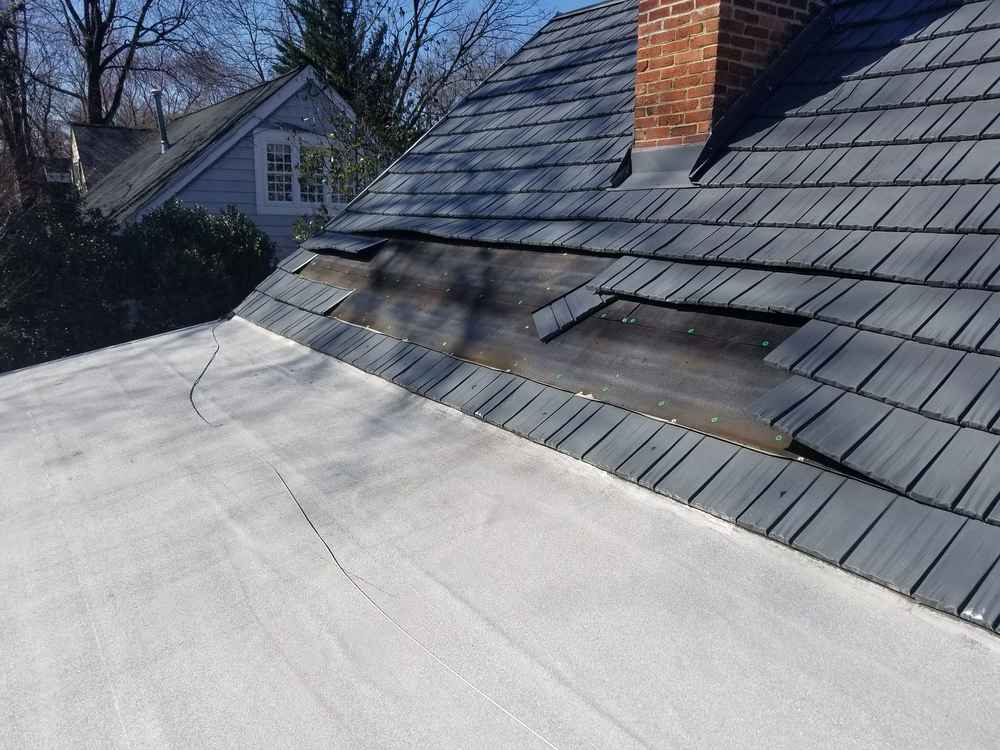A sudden gust of wind, a severe storm, or simply the passage of time – all these factors can lead to a common homeowner’s nightmare: shingles blowing off the roof. When this happens, it not only compromises the aesthetic appeal of your home but also leaves it vulnerable to leaks and other weather-related damage. In this article, we will delve into the causes of shingles blew off roofs, the necessary repairs, and preventive measures to safeguard your roof.

Understanding the Causes
Shingles blew off a roof can occur due to various reasons, and understanding these factors is crucial in addressing the issue effectively.
1. Age and Wear
Over time, shingles can become brittle and lose their adhesive properties. This natural aging process makes them more susceptible to being dislodged by strong winds.
2. Poor Installation
Improper installation is a leading cause of shingle problems. If shingles are not properly fastened or aligned during installation, they are more likely to be blown off during a storm.
3. Severe Weather
High winds, hailstorms, and hurricanes can exert tremendous force on your roof, causing shingles to lift and blow away. The intensity of the storm and the quality of your roofing materials are significant factors in this scenario.
4. Inadequate Maintenance
Neglecting regular roof inspections and maintenance can lead to problems like loose or damaged shingles. When these issues go unaddressed, they can escalate, making it easier for shingles to blow off.
5. Previous Repairs
If previous repairs were not performed correctly or with compatible materials, they can weaken the overall structure of your roof, making it more susceptible to shingle damage.
Immediate Repairs: What to Do When Shingles Blow Off
When you discover that shingles have blown off your roof, it’s essential to take prompt action to prevent further damage to your home’s interior and structure. Here are the steps to follow:
1. Safety First
Safety should be your top priority. If you need to access your roof to assess the damage or make temporary repairs, ensure that you use proper safety equipment and take precautions to prevent falls.
2. Document the Damage
Take photos and notes of the damage for insurance purposes. This documentation will be valuable when you file a claim.
3. Temporary Repairs
If the damage is localized, you can make temporary repairs using roofing cement or sealant. Apply the adhesive under the remaining shingles to secure them in place. However, keep in mind that this is a temporary fix, and you will need to schedule a professional repair.
4. Call a Professional
Contact a roofing contractor to assess the extent of the damage and provide a permanent solution. They will determine whether the damaged shingles can be replaced or if a larger section of the roof requires attention.
Preventive Measures: Avoiding Future Shingle Blow-Off
While you can’t control the weather, you can take proactive steps to minimize the risk of shingles blowing off your roof.
1. Regular Inspections
Schedule annual roof inspections to identify and address potential issues before they escalate. A professional can detect loose or damaged shingles and repair them promptly.
2. Quality Installation
Ensure that your roof is installed by a reputable roofing contractor who follows industry best practices. Proper installation is critical to the long-term integrity of your roof.
3. Choose Durable Materials
Select high-quality roofing materials that can withstand the weather conditions common to your area. Investing in durable shingles and underlayment can significantly reduce the risk of blow-offs.
4. Storm Preparedness
Stay informed about impending storms and take precautions to secure loose items in your yard. Consider investing in hurricane straps or roofing adhesive to reinforce your shingles.
5. Routine Maintenance
Perform routine maintenance tasks like cleaning your gutters and removing debris from your roof. This can prevent water from backing up and causing shingle damage.
Conclusion
Shingles blew off a roof can be a frustrating and costly problem to address, but with the right approach, you can minimize the risk and protect your home. Regular inspections, quality materials, and professional installation are key to preventing shingle blow-offs. If you do experience damage, act promptly to make temporary repairs and schedule a professional assessment to ensure the long-term stability of your roof. By taking these steps, you can keep your home safe and secure even in the face of adverse weather conditions.



Leave a Reply